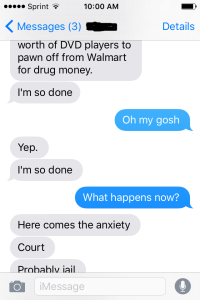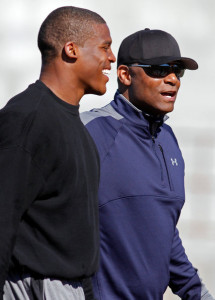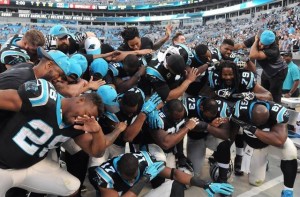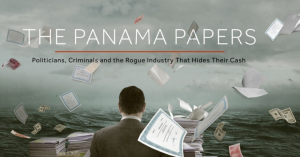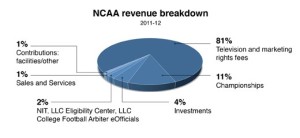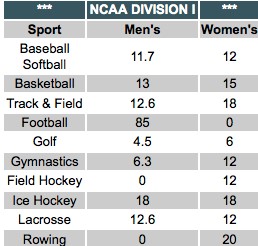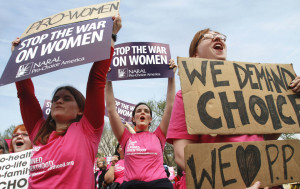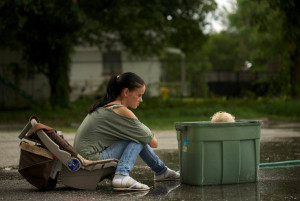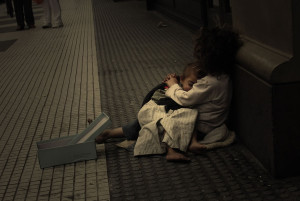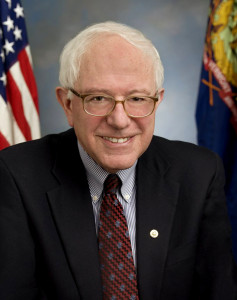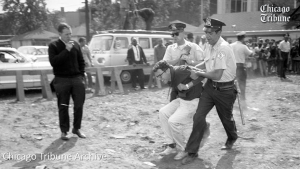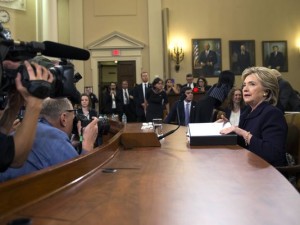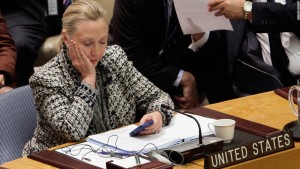Was it her fault? Was she to blame? Why didn’t she speak up?
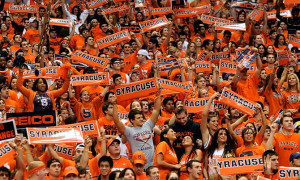
Jackie and I met the first day of freshman year here at Syracuse University. We instantly connected which was a relief for me since I was nervous I wouldn’t find people like I did back home. However, as the year went on, Jackie and I became more distant. Going out together every week turned into every other month. I didn’t question it, but I should have. One night Jackie asked me to go to a slam poetry event with her. That night, I learned that Jackie had been sexually assaulted.
Sexual assault isn’t properly addressed and taken care of anywhere around the United States. Our society has conditioned us to tuck away the topic of sexual assault, rather than speak about it openly and freely. The hub of the issue with sexual assault is mainly seen on college campuses. Kelly Wallace, a digital correspondent for CNN’s newspaper magazine, states that according to the new survey by the Association of American Universities (AAU), 23% of female college students said “…they experienced some form of unwanted sexual contact — ranging from kissing to touching to rape, carried out by force or threat of force, or while they were incapacitated because of alcohol and drugs”. Statements like these are ever so often released to the public, but nothing seems to change.
Lets take a moment back into time…
In 1970, college women in England decided to proudly stand up for sexual assaulted victims, like themselves, and started a worldwide trend of marches that are to this day known as Take Back the Night. It’s a night to raise awareness of sexual assault that begins with people sharing their personal stories of how they were assaulted that then ends with a long walk to stand up for severity of the issue. Now it is 2016, 46 years later, and the issue of sexual assault on college campuses is subsequently more prevalent than ever. According to Jeff Guo, reporter for Washington Post magazine, Penn State University “saw the biggest spike in reports. It had a total of 17 cases in 2007 and 2008, and a total of 80 cases in 2011 and 2012.”
This statistic got me thinking and I explored my own perspective and created an argument of why sexual assault is still a major issue on college campuses. Two main factors that make up my argument for the main causes of sexual assault are universities as a brand name and Greek life.
Universities have been well known institutions around the country to help students learn how to thrive in the real world. For example, Harvard and Stanford University are known to be two of the most prestigious and elite schools in the country. They brand their name well amongst society. However, they take advantage of this.

According to Netflix’s newly released movie, The Hunting Ground, “In 2009-2013 Harvard University had 135 reported sexual assault cases and only 10 were “handled”.” “In 1996-2013, Stanford University had 259 reported sexual assault cases and only one student was expelled.” These elite universities don’t want the media or the public to have any acknowledgement that their campuses have an issue with such a dangerous problem. It degrades the entire purpose of what their university stands for. For centuries, alumni’s have been donating large amounts of money to keep their school in the best shape possible and cases like these would ruin their reputation. Colleges don’t want to own up to the fact that they can’t control such a serious matter, thus they treat the situation like a buzzing fly. It’s constantly buzzing and they can’t swat it because its so minute but they know it will eventually go away. Andrea Pino, a student at University of North Carolina, stated in her interview for the Hunting Ground documentary, “I had nightmares that were so vivid that I would wake up and my neck was bleeding of how much I was scratching off that invisible rapist on my neck again.” Students do not have an active voice in a place that is “home” for them. They can’t speak up because they know the entire representation of the school is much more important than just one single students opinion. Parents pay thousands of dollars each year for their children to attend elite colleges, which entails the best educators and environment in the country, but little do they know that their child also just entered a dangerous hunting ground. Colleges will continue to get away with sexual assault cases it if they aren’t stopped.
Another issue to address is that Greek life is a main instigator for this problem. People mostly think its all men are the predators in this situation and that’s what I thought too. It’s the male image that makes people think that way. They are clearly more aggressive and stronger than women. However, this image is definitely fading. In fact, according to Rape, Abuse, and Incest National Network, “2. 78 million men in the U.S have been victims of sexual assault or rape.” This statistic isn’t close to the effect sexual assault has had on women, but it shows how all men can’t be perpetrated as the predators. This is why I aim the issue at Greek Life. Fraternity brothers live the life style where they feel empowered and entitled in society because they are known as a brother of a fraternity . When they have social events with sororities, their brothers love to instigate other brothers to bring out the worst in them.
“FRATERNITY MEN HAVE A HIGHER RISK FOR COMMITTING SEXUAL ASSAULT.”
People counterpart this argument by saying, “it’s a few bad apples” however I don’t believe that is the case. Caitlyn Flanagan, a journalist for the Atlantic featured on the Hunting Ground stated, “it is a matter of public record that the second most common type of insurance claim against the fraternity industry is from sexual assault.” On the contrary, it is not all fraternities across the country that are the issue, but a selected few. In the Hunting Ground documentary, it is known at UNC that the fraternity SAE is known as Sexual Assault Expected. This is well known for SAE across the entire south coast. According to Angelica Bonus, a reporter for CNN, “In 2010, SAE fraternity brothers at Yale University chanted on campus, “ no means yes, yes means anal!”” At Wesleyan University, there was a fraternity known as the “Rape Factory” as well. Now, people say that the solution is to ban fraternities across the country. However, fraternities are an American icon across the country and have created larger reputations for themselves other than sexual assault issues. It is also not the fraternity itself, but the selected men within them. This is why I have a different solution.
The solution is executed at Syracuse University.
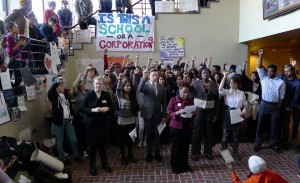
Even here at Syracuse University, sexual assault is an issue. According to Syracuse’s local news, WSYR-TV, “In 2012, the latest year statistics are available, the Syracuse University Department of Public Safety received 10 complaints alleging sex offenses. Eight of those were reported to have happened on-campus.” This is very scary being a female college woman myself. Dave Tobin, reporter for The Post-Standard, stated that in 2013, Chancellor Kent Syverud closed the Advocacy Center on Syracuse University campus. Over 70 students protested on Hendricks Chapel and used social media to their advantage. They repeatedly used a Twitter hash tag, #rally4consent, until their voices were heard. They also had 8,000 signatures seeking to reinstate this center. Since then, Syracuse University reopened the Advocacy Center in 2014 and has implemented a great support system to help students who have been sexually assaulted. In every bathroom stall on campus, whether you live in a dorm or go to the library, they explicitly say that students will not be judged or questioned when they report an issue dealing with sexual assault. This is a smart strategy because its located somewhere everyone will definitely see it. It’s not tucked away. They want students to speak up. Take Back The Night is mandatory attendance for every member of a fraternity and sorority every year to raise awareness. Bu t people don’t think of it as a drag to attend, it’s more of a want. Students want to unite as a community to help everyone feel safe on campus. This is not the same at other colleges. Syracuse University also takes a pledge for the It’s on US campaign. It’s a different approach for college campuses, like Syracuse University, to have their students view the prevention of sexual assault as a responsibility on campus. It makes students know they are a role model and a leader, not just a student. Joe Biden came to Syracuse University to endorse and speak about this issue through his pledge to stand up against sexual assault. I in fact attended the speech myself and the feelings in the room were so strong. Everyone was speechless.
t people don’t think of it as a drag to attend, it’s more of a want. Students want to unite as a community to help everyone feel safe on campus. This is not the same at other colleges. Syracuse University also takes a pledge for the It’s on US campaign. It’s a different approach for college campuses, like Syracuse University, to have their students view the prevention of sexual assault as a responsibility on campus. It makes students know they are a role model and a leader, not just a student. Joe Biden came to Syracuse University to endorse and speak about this issue through his pledge to stand up against sexual assault. I in fact attended the speech myself and the feelings in the room were so strong. Everyone was speechless.

Like Lady Gaga says in her song to raise awareness for sexual assault, Till It Happens To You, “Cause when you fall you,you gotta get up, you gotta get up and move on.” Syracuse University offers victims of sexual assault to move on in a way that is liberating and satisfying. They are moving in the direction for the solution against sexual assault in a manner that students don’t need to be feeling judged for speaking up. Instead of focusing on the brand of what their university stands for, Syracuse University cares about the student’s individual experiences on campus intensely. Fraternity brothers are well- educated each semester on the issue of sexual assault and this has helped decrease the statistics of sexual assault on campus since 2014. It is imperative that other colleges move in this direction as well. Syracuse knows exactly how to execute a problem when it is presented to the public and without trying to hide it, they solve it.
I want to leave you with an important quote I heard on Youtube from a poetry slam competition, CUPSI 2014: VCU performs “Bois Will Be Boys”, against sexual assault. “Would you tell her that not all boogeymen live under the bed, some live on top of it.” People that attend college don’t look back and think about the classes they took or the professors they had, but they remember the endless laughs and precious moments they had with their friends. So lets prevent women, like my friend Jackie, from seeing their “boogeyman” everyday for the rest of their lives. Let’s take a stand so college women have more precious moments to hold on to rather than life threatening ones. Be the solution.
Reflection Unit III:
- Answer: The title that I decided would best suit my magazine was The Nightmares of Sexual Assault. It definitely engages the readers into what the magazine is going to talk about. However, I do think I did a better job working on my lede. It’s a line of questions such as,” Was she to blame?”, that would make readers curious about what they are going to read about and why they are being asked. My title is more creative than my lede,but my lede is definitely more thoughtful and clever. It doesn’t lead into the issue, but it definitely is relevant to the topic based on the questions asked. I wish I was more specific with my lede by starting off with a statistic to grasp the more of the readers attention.
- Answer: What is very interesting about my introductory section of my magazine article is that it offers a personal story to engage readers into the nightmares of sexual assault, which reflects on the title of the article as well. “Jackie and I met the first day of freshman year here at Syracuse University. We instantly connected which was a relief for me since I was nervous I wouldn’t find people like I did back home. However, as the year went on, Jackie and I became more distant. Going out together every week turned into every other month. I didn’t question it, but I should have. One night Jackie asked me to go to a slam poetry event with her. That night, I learned that Jackie had been sexually assaulted.” It locates a problem by explaining a real life example to readers that they can either reflect on or take in how it is played out in society. By adding a personal touch in the introductory section of an article, it appeals to emotions of readers and grabs their attention.
- Answer: I think I did well with offering a strong idea to readers about my topic by adding many statistics about the issue with sexual assault. I started by stating my argument about the issue, which was branding of universities and Greek life, then supporting and analyzing the issue with statistics. For example, “In 2009-2013 Harvard University had 135 reported sexual assault cases and only 10 were “handled” and “In 1996-2013, Stanford University had 259 reported sexual assault cases and only one student was expelled.” These are both statistics that allowed me to evolve into the issue of branding with universities. This was a good example of how I did this throughout my article with other statistics. I did not offer evidence that was obvious to readers; I didn’t even know it until I did some well research myself which I think is very interesting and attention grabbing as well.
- Answer: I showed clarity of thought for this article because I stated my argument in the beginning and didn’t deviate from it. I kept on track with my thoughts in a well- organized manner. I also believe that my article is uniquely presented. I added my own pictures that I felt matched best for what I was talking about in the article and I added creative captions as well. For example, for the Lady Gaga picture I captioned it by saying, “New Single by Lady Gaga, Till it Happens To You. Check out the link above to view the full music video and share it on Facebook, Twitter etc.” I thought this gave a personal touch to my article and will draw peoples attention instantly. I also gave a different form of evidence since most of it was offered by a documentary. It took hours for me to go analyze it and find the best statistics to offer in my article. However, I wish I gave more historic information for this article. I touched on it, but I wish I gave more of a timeline feel to include.
- Answer: I definitely avoided cliché points by being very blunt and using persuasive information that was suppose to be taken very seriously. However, in my last paragraph, I do see that I got very cheesey at the end. “People that attend college don’t look back and think about the classes they took or the professors they had, but they remember the endless laughs and precious moments…Jackie, from seeing their “boogeyman” everyday for the rest of their lives….solution.” This paragraph I wish I had made more professional and serious to relate to major issues of sexual assault. I wish I had organized the material a little better, but I strongly developed my article and it has sequence.
- Answer: I wish I included more controversy into my article, but a strong one that I included was that not all men should be seen as the predators in society when it comes to sexual assault. I develop a persuasive stance by adding statistics about this issue and how they are affected as well. I wish I used more statistics to create a stronger debate to make an important point about this issue.
- Answer: I exceeded the appropriate secondary sources by adding more than 6 and I definitely added more than 1 visual source. I thought it was necessary in order to make my argument strong and to appeal to reader’s eyes more. My primary research is very strong as well since I used the source of the documentary the Hunting Ground to help develop my stance on the issue of sexual assault. This was my strongest area with the article and I take a lot of proud with it.
- Answer: I feel like I could have integrated my secondary and primary sources more organized in my article, but they definitely do integrate. They more so support my topic rather than complicate. That was my intentions for this article. I wish I introduced them in a way that could have driven a more deep discussion rather than an informative one.
- Answer: The entire purpose of my magazine was to persuade readers that my argument was the main cause of sexual assault. By using personal and strong statistics, I definitely think I appealed to the readers senses by using ethos and pathos. However, I wish I used my logos in my article. The art of persuasion is the best way possible to get readers attentions and I think I executed this very well.
- Answer: I started the article with a top header visual of an image of a person stepping off a bed but someone is looking to grab him/her. It is suppose to grab peoples attention to appeal to the title of my article. I then developed by using other visuals such as a crowd of Syracuse to introduce my first paragraph and a description from the It’s on US campaign to give people the opinion of other ways to handle sexual assault. I included commentary by adding captions to all my visuals as well since they are meaningful to the topic. This is why I think I did an appropriate job with my visuals because they are all interesting and extensive. Maybe they are too excessive, but I think it was definitely necessary.
- Answer: From all the workshops, such as scrambling our drafts, I improved my final draft drastically. I was confused in the beginning on how to place my primary and secondary sources, but using my peers I was able to have great feedback to make my magazine article the best it could be. The comments from our last project from my teacher also directed me in the right direction of how to approach this assignment and that was very helpful.
- Answer:I used hyperlinks to give people the option of whether or not they wanted to get the full information of where I drew my research. I think this was a very effective thing for a writer to do and appropriate as well.
- Answer: I think I did well with editing my paper and style. I definitely think I could have better writing skills, but that is what this course has helped me do. My style has grown to be stronger after every assignment we have done since this class, which is very helpful. I draw attention to get credibility for this issue because I have taken a long time to have well researched into this piece.






